Eco Friendly designer credits
Pick up your vegan heels to run through the autumn leaves and explore green fashion's adventures as Sapphire Whisper highlights the work of some of fall's hottest eco friendly designers. Designers continue to defy all expectations and limitations successfully pushing beyond previous preconceptions about the look of eco friendly fashion. We took notice of the following designers, each with their own special and inspirational fashion message with eye catching designs that are a must have for the fall season
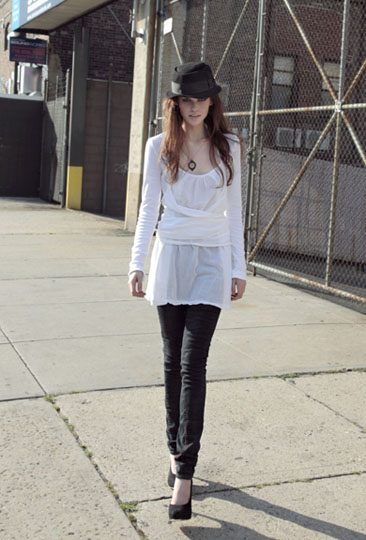 Prairie Underground
Prairie Underground
Prairie Underground has incorporated sustainable textiles made of hemp and organic cotton into every collection that they have been producing since 2005. They have also incorporated the use of recycled polyester/organic cotton blends and overstock fabric of both conventional and sustainable fabrications into their collections. furthermore, Prairie underground prides itself as a business which directly supports a diminishing network of sewing contractors and a dye house in Seattle Washington all within fifteen minutes from their studio. These businesses now rely on their collection after so many companies have moved production overseas. The majority of fabric is knitted in the United States, as Prairie Underground follows through a mission of sourcing domestically and as close to Seattle as possible. Orders are shipped with a minimum of interior packaging in clean re-used boxes with hangtags designed to be reused as bookmarks. By only producing what is ordered, Prairie Undergrounds eliminates a surplus of unwanted clothing. Each day working to establish a fair and ethical model for doing business in the garment industry, Prairie Underground strives to create a different type of American business through their example and progressive work.
While it has always been an essential part of their business ethic to use sustainable materials, they prefer not to describe the collection as exclusively eco because that only describes one part of their business. Prairie Underground is both populist and non-commercial while supporting fair trade and domestic industry. Their concerns are not exclusively ecological. Matters of artistic expression, accessibility, economy, and local production are all a part of their design parameters.
Prairie Underground remains designers with an idiosyncratic point of view, obsessive about fit, silhouette and how customers will wear their clothing every day. They are keenly aware of their customer and work to seduce and delight them with each new collection. Always thankful for their success, Prairie Underground truly believes they are living the American dream. www.Prairieunderground.com
Jai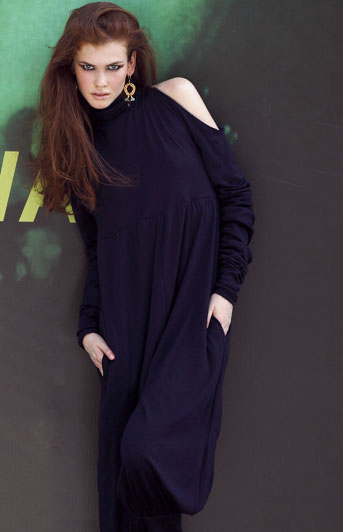
Jai is a contemporary designer brand that promotes a sustainable holistic approaches to fashion and style. The current activewear collection is produced locally in NYC boasting versatile silhouettes made for women on the go. Styled with sandals, sneakers, boots or heels, Jai dresses women focused on quality, confidence and style, making them ambassadors of contemporary elegance.
Designer Kizzy Jai Knight was born and raised in the South of England; she studied her bachelor's degree at the Liverpool Institute for Performing Arts where she majored in Dance and then continued the cultivation of her creative aspirations in NYC where the limbs of the fashion industry became part of her daily routine.
Kizzy designs eco friendly and socially conscious clothing that bridges the gap between comfort, fashion, style and sustainability incorporating the quality eco friendly materials, such as:
Tencel: Tencil is a biodegradable fabric made from cellulose in a woodpulp that is obtained by an organic solvent spinning process. It's a natural polymer that makes up the living cell of vegetation . The closed loop process used to manufacture Tencil fiber was awarded the environmental award in 2000 for the category "technology for sustainable developments"
Recycled Nylon: Mipan regan recycled nylon and Regan recycled polyester are GRS certified as being made from post-consumer material thereby reducing waste, CO2 emissions and petroleum.
Recycled Cotton: Recycled Cotton may be the most environmentally friendly fiber on the planet. The cotton used by Jai is made from preconsumer cotton 'table waste' clippings from cut and sew facilities that otherwise would be dumped into landfills. It doesn't need to be dyed and there are no harsh chemicals or liquids of any kind used in its production process. www.jaiactivewear.com
Feral Childe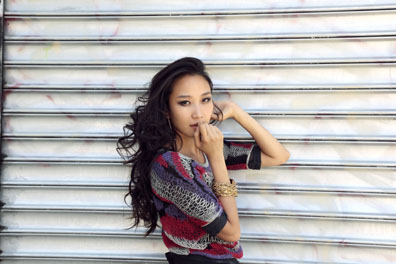
Feral Childe is a womenswear line by bi-coastal design duo Moriah Carlson (Brooklyn, NY) and Alice Wu (Oakland, CA), who both come from a fine arts background. Feral Childe combines thoughtful choice of materials and attention to quality construction to make smart, wearable silhouettes for forward-thinking women.
Feral Childe is proudly manufactured in New York City's Historic Garment Center. For the Fall 2010 Collection: THE LIGHTNING FIELDS, Feral Childe's collaborative drawings form the basis of the collection's textile prints, wry construction details, and absurdist accessories.
Materials featured in the collection include organic cotton twill and slub jerseys, Tencel, surplus performance fabrics like bonded wool knits and ripstop nylon, recycled plastic soda bottle batting, and textured silks.
Feral Childe's playful silhouettes and curiously elegant tailoring gained a devoted following, at home and abroad, among young and old, traditionalists and renegades. Today, Feral Childe is represented by independent-minded stockists who display Feral Childe clothing and accessories among their rarest finds. www.feralchilde.com
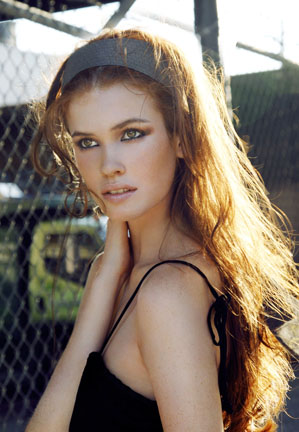
Beau Monde Organics
Beau Monde Organics and the scarves are conceived and designed with strong attention to every detail and how it affects the environment and individuals. A Beau Monde Organic Cotton Scarf is printed with striking original art designs by Stephanie Gale, not generic patterns. The Eco Friendly line of scarves are made of certified organic cotton voile and sewn with certified organic cotton thread. They are naturally soft, not chemically treated, with no synthetics and no sweat shop labor. As a company Beau Monde Organics cares to make positive changes in the world and believes that small steps make big changes possible:
Scarf Fabric: Raw Material is undyed 100% G.O.T.S. Certified Organic Cotton Voile, Milled in India, Finished in USA
Textile Printing: Each scarf is custom-printed to order by textile printing experts in Pennsylvania, using the latest digital textile technology and aqueous (water-based) inks. This method was chosen over reactive dye process for its color control and for using 70% less waste water. All non-toxic and disposed of in accordance with PA ordinances.
Cutting & Sewing: Each scarf is hand cut and sewn with care by Master Tailors locally in Los Angeles, CA. All scarves are sewn with 100% U.S. Certified Organic Cotton Thread.
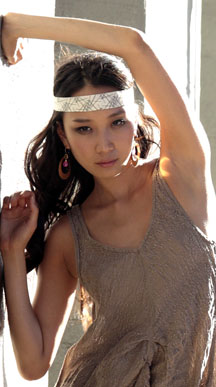 Organic Cotton Thread: Beau Monde Organics exceeds G.O.T.S. by using only 100% U.S. Certified Organic Cotton Thread to sew their scarves. (Under G.O.T.S. it is currently allowable to use polyester thread, an oil-based product, in the manufacture of organic fabric apparel) and they source their organic cotton thread from one of the few producers of organic cotton thread in the world, Fiberactive Organics, in North Carolina.
Organic Cotton Thread: Beau Monde Organics exceeds G.O.T.S. by using only 100% U.S. Certified Organic Cotton Thread to sew their scarves. (Under G.O.T.S. it is currently allowable to use polyester thread, an oil-based product, in the manufacture of organic fabric apparel) and they source their organic cotton thread from one of the few producers of organic cotton thread in the world, Fiberactive Organics, in North Carolina.
Tagless Label: Each Beau Monde Organics Scarf has a 'Tagless Label', which means the label that usually sticks off of a scarf is actually printed onto it. This is more comfortable for the wearer and also is a more efficient design.
American Made, American Paid Adult Labor: Every scarf is custom produced to order. Beau Monde Organics highly respect all the people who help create their line of beautiful, high quality scarves. All are adults, all are paid by U.S. professional standards (no minimum wage workers) and all our production is entirely in America.
Packaging: Minimal packaging is used; an undyed organic cotton ribbon that holds the scarf and the hangtag.
The hangtag or folding band are of FSC certified 100% PCW paper. When shipping is needed, all efforts are made to avoid plastics for packing, and/or minimal amounts of recycled/recyclable packing materials.Ribbon: Scarves are tied with undyed Certified 100% Organic Cotton Ribbon from Near Sea Naturals in New Mexico.
No Oil-Based Products or Fibers: Beau Monde Organics wants to find ways to reduce their dependence on crude oil. By finding ways to design, source and create our products and materials with the goal of using no oil-based products. That includes no polyesters, nylons, Spandex, oil-based inks or oil-based plastics, as much as it is currently possible. Recycle, Reuse, Reduce Waste
www.beaumondeorganics.com
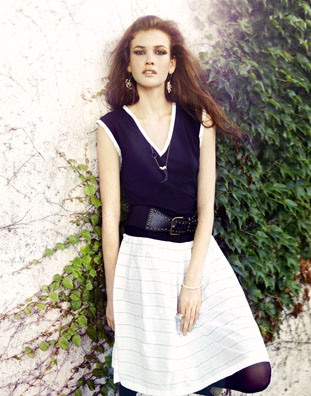
DreamAndAwake
DreamandAwake is a unique innovative company. They acquire a collection of vintage dresses from around the world. These pieces are in turn redesigned, refined and transformed into a new unique garment. Each is a forgotten beauty, standing strong and ready to find its new owner. Each dress is unique, made in one sample.
DreamandAwake selects, collects and refines vintage dresses from around the world : from the past for the future
Environmental Impact: Because their raw materials have already been produced and used in the past no pollution is caused during the re-production stage. The main environmental impact is during transportation which may be by sea, air, train, car, bus or when possible by bicycle or foot depending on destination.
Social Impact :Dreamandawake does not work in strict seasons, therefore no time pressure or demand of overtime on the tailors that are free to decide themselves when to work. They also paid a fair sum set by the tailors themselves. Many of the changes are also made in their mobile dreamandawake studio.
Red Cross collection
DreamandAwake's continues their ongoing cooperation with the Red Cross organization Sweden where dreanandawake is coordinating and designing the set up of local production of dresses. DreamandAwake has now gone one step further by producing new dresses out of discarded clothes and textiles which cannot be sold second hand or do not fit in relief supplies in order to offer an alternative for sustainable development by reusing existing resources. Designer Amanda Ericsson has visited the Red Cross Second Hand Shops and searched through the piles of discarded clothes and textiles. From her findings, she has created a kit consisting of fabric cut outs and instructions of how to sew the dresses. The kits are delivered to volunteers in the Red Cross’ sewing groups. The volunteers sew the dresses and Amanda then checks every dress to ensure the quality. All dresses produced are put up for online sale in Amanda’s shop dreamandawake.com. The entire amount raised goes to the Swedish Red Cross’ Save the Mothers Campaign.
Every dress sold raises enough funds to supply a village midwife in Sudan with equipment for five deliveries. Among many projects, the money raised will go towards supporting village midwifes in Southern Sudan, to treat mothers and children with severe trauma of war and to reunite families who have separated. The campaign aims to raise awareness around the issues of women who are afflicted by war and conflict. www.dreamandawake.com
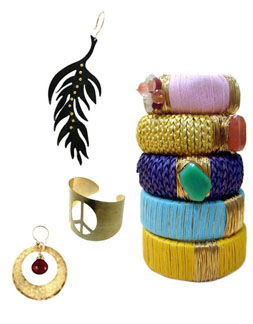
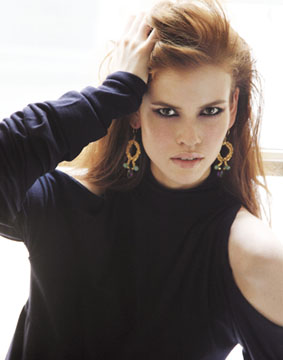
Nashelle
Sold in over four hundred high end boutiques worldwide, Nashelle Jewelry, is classic, modern-chic at it's best. Clean details, boldly designed and beautifully constructed, it's no wonder this line has become sought-after by celebs and non-celebs alike
Nashelle is committed to using recycled precious metals and natural gemstones.All jewelry is handmade to order at their studio in Bend, Oregon. Each piece is brought from start to finish paying close attention to detail: Whether it be choosing just the right gemstone for a ring to gently distressing a charm, the team at Nashelle prides themselves in creating unique one of a kind pieces that can be cherished for a lifetime. Nashelle creates quality while always being conoscious of the earth and its beauty as well as its resources, by using recycled precious metals: 14 karat gold fill and sterling silver as well as natural gemstones. www.nashelle.com
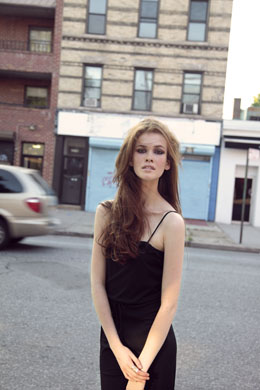
Physical Graffiti
Located in the heart of NYC's East Village on St Marks Place, Physical Graffiti is the home to unique selection of vintage wears for men and women. this cozy shop opened in 1994 by Ilana Malka and in addition to its well edited selection of vintage clothing and accessories, the location itself is also quite noteworthy. The last Led Zeppelin album used the very same building for the album's cover and the building was also used as backdrop for a Rolling Stones music video - Waiting on a Friend. The concentration of shops on St. Marks Place reflects the current flavor. The street has been home to hippies, yippies, punks, political activists and protest marches, renowned bookstores, music stores and clubs, graffiti artists, cafes, clothing shops, restaurants, bars, theaters - physical graffiti well describes the street itself.
There are lots of reasons why vintage is such a great choice, and one of the most fulfilling reason is that wearing vintage clothing is the most environmentally friendly way of dressing. Wearing vintage clothing is literally recycling fashion from other eras and reusing what is available to create an entirely new style . By its very nature, vintage uses less resources, produces no chemicals, dyes or other such waste and virtually leaves no carbon footprint.
www.physicalgraffitivintage.com
Olsenhaus
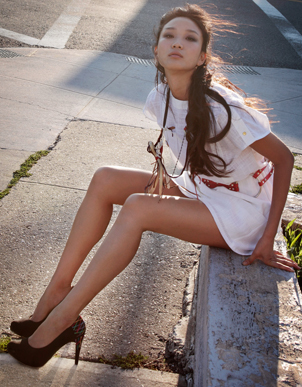 Olsenhaus is a creative, bold women’s collection of vegan footwear, with additional mens’ and childrens’ styles. The line has received immediate, raving reviews domestically and internationally by retail stores, with major on-line and print press.
Olsenhaus is a creative, bold women’s collection of vegan footwear, with additional mens’ and childrens’ styles. The line has received immediate, raving reviews domestically and internationally by retail stores, with major on-line and print press.
Olsenhaus uses alternative, sustainable and renewable plant-based and man-made, non-animal materials such as: ultra suede, organic cotton, canvas, nylon, velvet, linen, cork, and a synthetic eco-lining. Olsenhaus is 100% vegan: no leather, fur ,wool or silk is ever used. The Soles are a composite of rubber, the glues are rubber-based and vegan, the paint is vegan and non-toxic. Nothing is tested on animals. Olsenhaus continually searches for more innovative techniques and encourages their factories and suppliers to use safer processes.
Synthetic and plant based materials account for far less pollution, and use only a fraction of the energy when compared to any leather. Most synthetics available today are flexible, breathable, and biodegradable. In addition, alternative materials are consistent in size, shape and thickness and therefore the entire piece is used, unlike a leather, which creates an enormous amount of waste. For its
Manufacturing, Olsenhaus works only with people and factories with high standards of quality, reliability and accountability. Factories are personally checked for fair trade practices, fair wages, proper facilities, ventilation, clean and comfortable working conditions, safe machinery, superior organization, it is ensured that employees are respected for their skills, there are no child –labor practices, and no outsourcing to other factories or countries. Olsenhaus produce as local as possible in Central America.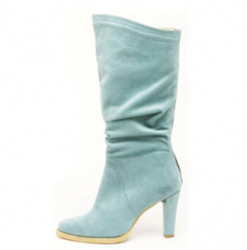
The concept of Olsenhaus is to showcase alternative materials that are clever, sophisticated, fun and on trend, while promoting consciousness through example and education. What the goods are made of, why, and attention to the impact on the environment, animals and people. In addition, Olsenhaus works to change the face of what a vegan person looks like: someone who is hip and stylish, knowledgeable about what is going on, and working to make a difference, without sacrifices. It is all about style, truth, and the shift in consciousness to a new luxury.
Recycled for Fall 2010
The fall 2010 collection is made of 100% recycled industrial waste from television screens, that have been made into an ultra suede material. Not only is the material recycled, but the manufacturer employs a method called PET chemical recycling, which reduces both energy consumption and Co2 emissions by a minimum of 80%. The material is durable, colorfast and waterproof. Natural resources/sustainable materials: such as wood and cork are used in the collection , as details of the heels and platforms.
Olsenhaus additionally uses recycled rubber tires, transforming an environmental problem into a durable appealing sole.
www.olsenhaus.com
Sapphire Whisper Eco Friendly Fall Editorial
